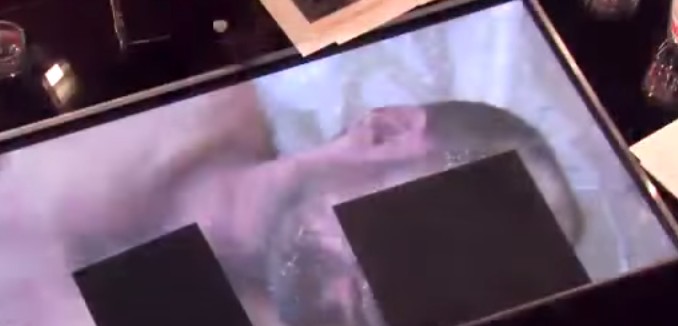A photographer known only as “Caesar” who photographed thousands of victims of the regime of Syria’s President Bashar al-Assad, and smuggled those pictures out of the country as documentation of the regime’s brutality, shared his story in an extensive report published Thursday in Vanity Fair.
Caesar had been a crime-scene photographer for Syria’s military police. When the rebellion against Assad started, Caesar and his team started paying regular visits to Mezzeh and Tishreen, hospitals run by Syria’s Military Medical Services. But these hospitals, in addition to providing medical care to wounded soldiers and civilians, also served as “black sites,” where opponents of the regime would be “tortured, executed, or simply deposited after being killed off-site.”
Caesar and his squad, using Fuji and Nikon digital cameras, would painstakingly photograph the remains of people from all walks of life: men, women, young, old, Sunnis, Christians. The security forces responsible for the killings even went after Alawites, the close-knit Islamic sect to which Assad and the rest of the ruling elite belong. (Some of the bodies, as is evident in Caesar’s photographs, arrived with what turned out to be an ironic marking—a tattoo of Bashar al-Assad’s face.) While a number of the victims, according to Syrian opposition figures, might be considered anti-regime activists, the rest simply found themselves for whatever reason on the wrong side of the regime. In many cases, sources say, individuals had merely been detained at checkpoints by guards who found their loyalties suspect based on their religion, where they lived, or even their demeanor.
These unfortunates may have lived and died in different ways, but they were bound in death by coded numerals scribbled on their skin with markers, or on scraps of paper affixed to their bodies. The first set of numbers (for example, 2935 in the photographs at bottom) would denote a prisoner’s I.D. The second (for example, 215) would refer to the intelligence branch responsible for his or her death. Underneath these figures, in many cases, would appear the hospital case-file number (for example, 2487/B). Such documentation is reminiscent of schemes used by the Nazis during World War II and is eerily reminiscent of an image bank collected by the Khmer Rouge during their Cambodian reign of terror in the 1970s. …
Caesar and his cohorts were responsible for providing a photographic record of death, but it fell to doctors such as Abu Odeh to pronounce a cause—which generally meant making one up. “Almost every day the Mukhabarat would drive up and bring dead bodies with them,” he explained. “I’d go out to the car, find a corpse lying in the back seat, can you imagine? Even if the dead guy was missing his head, the Mukhabarat demanded that I write that he died of ‘sudden death.’ That was their preferred choice, even though the injuries I saw ranged from, well, decapitation to electric shocks to stab wounds to ligature marks around the neck. This much was clear: these people had not died of natural causes. They were tortured to death by the intelligence services.” Abu Odeh said he would generate about seven to eight death reports a day.
The hospitals’ secrecy, combined with their practice of providing false causes of death, prevented family members from finding out what really happened to their relatives. A doctor who once worked at the hospital explained that the Assad regime went through the trouble of transferring the victims to hospitals “because mass graves have a bad reputation.”
Though Mezzeh and Tishreen were used to torture and kill opponents of the regime, they also functioned as hospitals for the privileged. Foreign dignitaries would visit Tishreen and see the patients the regime wanted them to see, while doctors and staff said only what they were told to say.
Caesar was troubled when he saw evidence that people he knew were killed, but couldn’t risk saying anything and being killed for leaking secret information. He was troubled enough by what he saw that he made connections and found ways to start smuggling his photographs out of the country.
In 2013, Caesar began worrying that he could lose his job, and decided that he needed to leave Syria. To cover his tracks, his handlers worked with opposition groups and issued a phony notice suggesting the Caesar had been killed. Since being extracted from Syria, Caesar has been cross-examined and had his photographs authenticated. When he was asked why he went public with his story, he said, “I love my country. This isn’t what Syria is. This isn’t what the people of Syria are about.”
Last year, Caesar’s presentation prompted the State Department’s war crimes expert to pronounce that Assad was guilty of crimes against humanity.
It was reported earlier this week that Iran spends billions of dollars a year to keep Assad in power.
[Photo: Conflict Studies / YouTube ]




